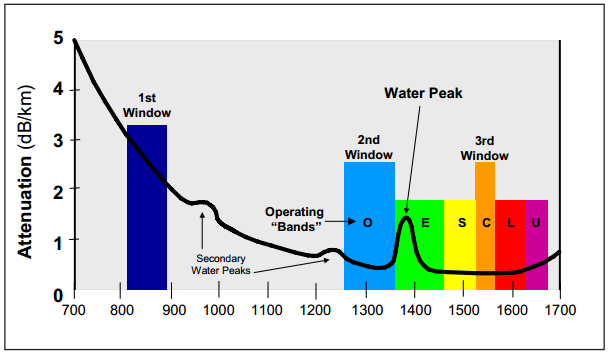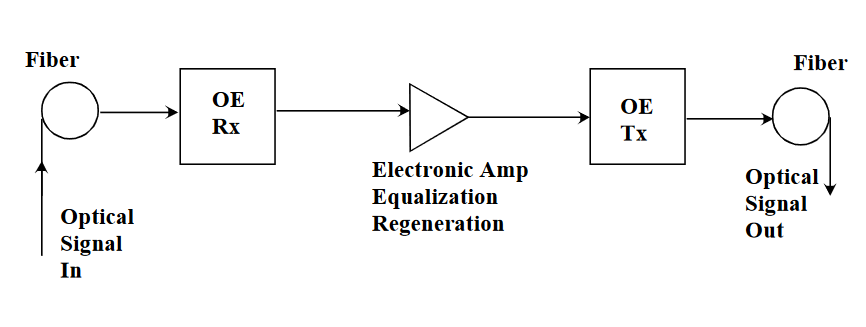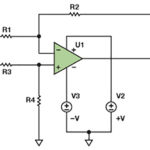We can now amplify electronic signals from low frequencies to the multi-GHz range without too much difficulty, but amplifying a stream of photons such as in an optical fiber has a very different meaning and is a challenge with no single or easy solution – but it is being done.
Electronic and optics technologies are making major, rapid advances, both individually and paired. They not only support each other, but integrated electro-optical devices are enabling innovative applications across a wide array of opportunities. One critical system in the optical world made possible by this photonic paring is the optical amplifier (OA).
Furthermore, it is reasonable for more electronic engineers to develop some comfort and familiarity with optical and electro-optical systems, as electronics and optical engineering projects increasingly overlap and merge in everything from sophisticated medical devices to mass-market products such as DVD units or finger-based blood-oxygen readouts. This FAQ look at the need for optical amplifiers, the different types available, and a brief overview of each.
But be warned: the underlying theories and principles are heavily dependent on deep physics insight and complex equations. In some ways, it’s hard to believe that scientist and engineers even realized that these things could be done, let alone actually built them. There’s an atmosphere of “magic” that seems to permeate them!
Q: What is an optical amplifier?
A: As the name implies, an optical amplifier obviously amplifies “something” optical-related. However, unlike electronic signals where their power (current, voltage, or both) is increased by an amplifier, in the optical regime that “something” is not the “power” of the optical energy packets we call photons.
Q: I am already confused – what do you mean?
A: Think back to physics class. Optical energy is conveyed by photons, and the energy and thus power (rate of energy) of a photon is a function solely of its wavelength. Thus, there are two ways to increase the power of an optical stream: increase the number of photons, or increase their frequency (decrease their wavelength).
Q: So, what’s the problem?
A: It turns out that accomplishing either of the alternatives is quite difficult, due to the inherent physics of the situation. Further, even if you could do so, creating new or more photons at a shorter wavelength may be nearly useless, since other elements in the optical path or application are usually inherently tuned or most sensitive to a specific wavelength or optical band.
Q: Why do I need to increase the power, anyway?
A: There are two major reasons you want to increase the optical power. First, you may have a low-power laser beam that needs to be boosted in output power. Applications which need this are long-range optical links (such as the laser beam directed to the moon for reflection timing and experiments, for a data link to a spacecraft, or a directed-energy weapon (a “ray gun”). All three have been executed to some extent, while the weapon is the subject of significant R&D and even some recent field trials for disabling or destroying missiles, drones, ground vehicles, and more.
Q: OK, but those are highly specialized non-mainstream applications; what are other applications?
A: The other primary application is invisible but in very widespread use. The OA is needed to boost the signal strength of the photon beam used inside optical fiber of distance links. Even though the attenuation of modern optical fibers is quite low, on the order of 1 dB/km (an amazing bit of technology advance), Figure 1, the optical signal strength in long-distance links will degrade. At some modest distance, the signal/noise ratio (SNR) becomes too low, and therefore the bit-error rate (BER) becomes unacceptably high. Some way of periodically boosting the optical signal along the way is needed to restore the signal strength before the SNR becomes unacceptably low. (For a contrast with the first copper trans-Atlantic cable see Reference 7.)

Q: Do you really need an optical amplifier to do this?
A: The purely optical amplifier is just that: an all-optical unit supported, of course, by electronic circuitry. Before the all-optical version was practical, reliable, powerful, and cost-effective, the need to boost the signal in fiber-optic links was satisfied by a hybrid OA configuration called the optoelectrical (OE) amplifier.
Q: What’s the principle of the OE approach?
A: In principle, it’s simple. The optical-fiber signal is captured by a photodiode, converted to an electronic signal, and that signal is amplified using a conventional electronic amplifier, Figure 2. The electrically amplified signal then drives a higher-power LED or laser diode, which is coupled to the optical fiber. The signal goes through the optical/electronic conversion, followed by electronic amplification, and then a complementary electrical/optical conversion.

Q: This sounds like a good approach, so why did it need to be improved?
A: There are many reasons. First, it has many sections (two conversion stages plus the electronic amplifier). Any imperfections in these, such as noise or nonlinearity, accumulate and degrade the final result.
Also, both ends of the amplifier (the photodiode and the LED/laser diode) have to be physically coupled with minimal loss to the optical fiber, which is a complicated, specialized process. Overall efficiency is low comparing the amount of DC power needed to the ultimate optical output power level. Finally, as data rates in the optical fiber increased to the hundreds of Mbits/sec and into the tens of Gbit/sec range, it became harder to develop electrical and electro-optical components with the needed performance at reasonable cost and reliability.
Q: So what is the architecture of the all-optical amplifier (usually referred to simply as an optical amplifier)?
A: There are four unreacted fundamental architectures of an optical amplifier, each using very different physics principles. Each one has tradeoffs in performance, size, efficiency, power level, and the specific optical wavelengths for which it is suited. Think of it this way: the electronic components and design of an electronic audio amplifier are very different than those used in an RF amplifier.
Part 1 of this FAQ has investigated the basic issues associated with optical amplifiers, including where and why they are needed and their inherent limitations. Part 2 will briefly describe the four major types of OAs.
References
- Techopedia Inc, “Optical Fiber Amplifier”
- Invocom (Poland), “2 Optical amplifiers: classification, basic configurations, and principles of operation”
- University of Arizona, “Section 5: Optical Amplifiers”
- Sergiusz Patela, “Optical amplifiers”
- University of Buffalo, “Inside the optical networks…A closer look to the amplifiers.”
- Fowiki, “Understand Fiber Attenuation”
- Engineering 360, “Transatlantic Telegraph Cable: Engineering Innovations Still Used Today”
- Andrew Blum, “Tubes: A Journey to the Center of the Internet”
Plus many of the Wikipedia articles are good, among them:


